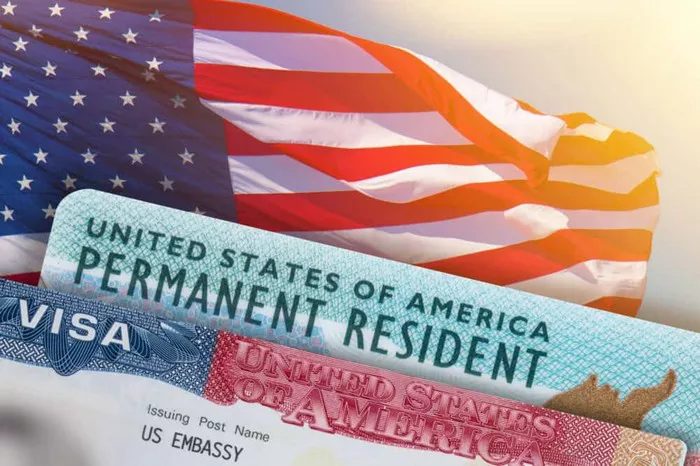For individuals seeking to establish permanent residency in the United States, the journey can be both complex and time-consuming. The process of obtaining a Permanent Resident Card, commonly known as a green card, involves navigating through various immigration pathways, each with its own set of requirements, eligibility criteria, and processing times. Understanding the timelines involved in acquiring permanent residency is crucial for applicants to manage expectations and plan their immigration journey effectively.
Understanding Permanent Residency in the USA
Before delving into the timelines, it’s essential to comprehend what permanent residency entails in the context of the United States immigration system. A green card grants foreign nationals the right to live and work permanently in the United States. It also serves as a pathway to citizenship, allowing individuals to eventually apply for naturalization after meeting certain residency and eligibility requirements.
Permanent residency can be obtained through several avenues, including family sponsorship, employment-based immigration, refugee or asylee status, diversity visa lottery, and investment-based programs such as the EB-5 Immigrant Investor Program. Each pathway has its own unique set of criteria and eligibility requirements, influencing the duration of the application process.
Factors Affecting Processing Times
Several factors influence the time it takes to obtain permanent residency in the USA:
1. Immigration Pathway:
The type of immigration pathway pursued significantly impacts processing times. For instance, family-sponsored green card applications may have different waiting periods compared to those based on employment sponsorship or investment.
2. Country of Origin:
The applicant’s country of origin can also affect processing times due to variations in visa availability and demand. Nationals from countries with high demand for immigrant visas may face longer wait times, particularly in family-based and employment-based preference categories subject to annual quotas.
3. USCIS Workload and Backlogs:
The workload and backlog at United States Citizenship and Immigration Services (USCIS) and other relevant government agencies play a crucial role in processing times. High volumes of applications, staffing levels, and administrative factors can contribute to delays in adjudicating petitions and applications.
4. Completeness and Accuracy of Documentation:
The accuracy and completeness of submitted documentation are vital for avoiding delays in processing. Any missing or erroneous information can lead to requests for additional evidence or even application rejection, prolonging the overall processing time.
5. Security and Background Checks:
All applicants for permanent residency undergo thorough security and background checks, which can vary in duration depending on individual circumstances. Delays may occur if further investigation is required or if the applicant has a complex immigration history.
Estimated Timelines for Different Immigration Pathways
While it’s challenging to provide exact timelines due to the aforementioned variables, here’s a general overview of the processing times for some common immigration pathways:
1. Family-Sponsored Immigration:
Spouse, Parent, or Child of a U.S. Citizen: Typically ranges from several months to over a year.
Sibling of a U.S. Citizen or Married Child of a U.S. Citizen: Can take several years due to annual visa quotas and high demand.
2. Employment-Based Immigration:
EB-1 Priority Workers: Generally faster processing compared to other employment-based categories, often within a year or less.
EB-2 Advanced Degree Professionals and EB-3 Skilled Workers: Processing times vary but can range from one to several years depending on demand and visa availability.
EB-5 Immigrant Investor Program: Processing times can vary significantly, ranging from a few years to over a decade, influenced by factors such as investment amount, project location, and visa backlog.
3. Diversity Visa Lottery:
Winners of the Diversity Visa Lottery undergo further processing, including interviews and background checks, with visas typically issued within one to two years after selection.
4. Refugee or Asylee Status:
Processing times for refugees and asylees can vary widely depending on individual circumstances and the complexity of their cases, ranging from several months to several years.
Tips for Expediting the Process
While the immigration process can be lengthy, there are certain steps applicants can take to potentially expedite their green card application:
1. Ensure Accurate and Complete Documentation:
Submitting well-organized and thoroughly documented applications can help avoid unnecessary delays due to requests for additional evidence.
2. Stay Informed and Communicate Promptly:
Stay updated on the status of your application and respond promptly to any requests or communications from USCIS or other relevant agencies.
3. Seek Legal Assistance if Needed:
Consider consulting with an experienced immigration attorney or accredited representative to navigate the complexities of the immigration process and address any issues that may arise.
4. Explore Premium Processing Options:
Certain employment-based immigrant visa categories offer premium processing services for expedited adjudication, though additional fees may apply.
5. Follow Up Regularly:
If your application is experiencing delays beyond the published processing times, consider contacting USCIS or relevant agencies to inquire about the status and seek clarification on any issues causing the delay.
Conclusion
Navigating the path to permanent residency in the United States requires patience, diligence, and a thorough understanding of the immigration process. While timelines for obtaining a green card can vary widely depending on numerous factors, applicants can increase their chances of success by staying informed, submitting accurate documentation, and seeking assistance when needed. By understanding the factors influencing processing times and taking proactive steps to expedite the process where possible, individuals can move closer to achieving their goal of permanent residency in the USA.


